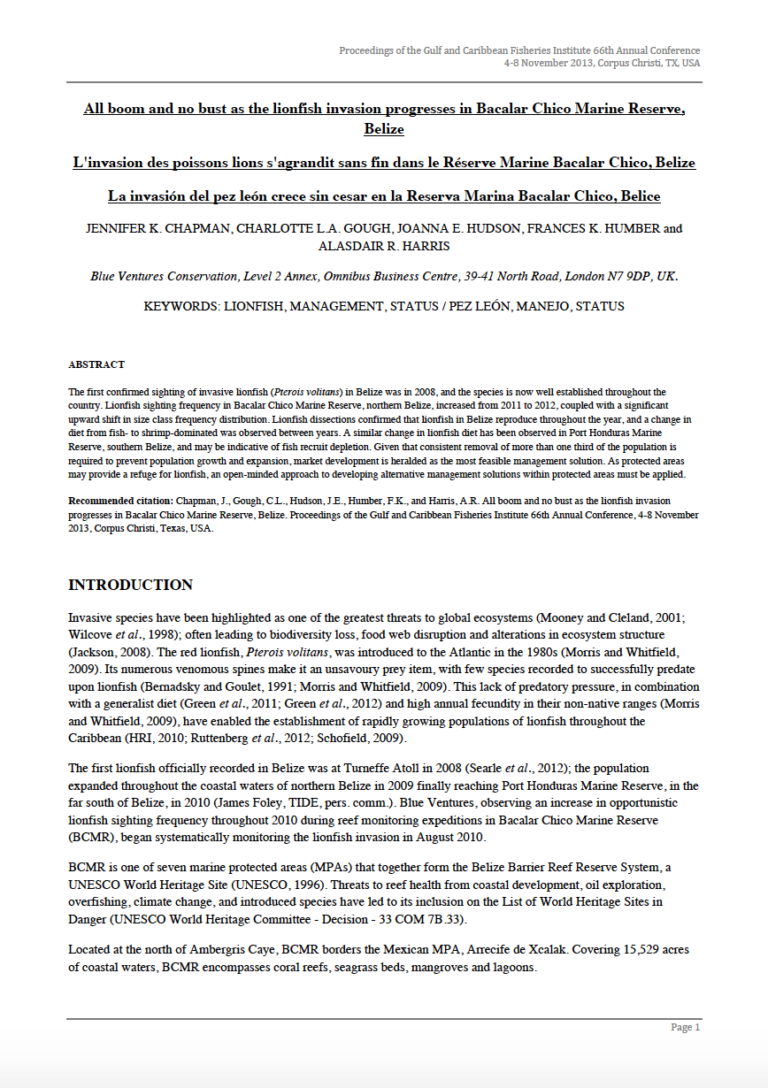Abstract
The first confirmed sighting of invasive lionfish (Pterois volitans) in Belize was in 2008, and the species is now well established throughout the country. Lionfish sighting frequency in Bacalar Chico Marine Reserve, northern Belize, increased from 2011 to 2012, coupled with a significant upward shift in size class frequency distribution. Lionfish dissections confirmed that lionfish in Belize reproduce throughout the year, and a change in diet from fish- to shrimp-dominated was observed between years. A similar change in lionfish diet has been observed in Port Honduras Marine Reserve, southern Belize, and may be indicative of fish recruit depletion. Given that consistent removal of more than one third of the population is required to prevent population growth and expansion, market development is heralded as the most feasible management solution. As protected areas may provide a refuge for lionfish, an open-minded approach to developing alternative management solutions within protected areas must be applied.

















